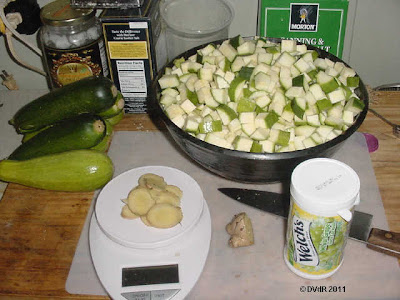Just in case you thought I was giving up fighting against GMO's being forced down out throats...
Now, I don't necessarily care a whole lot if lawn grass is genetically modified (other than the overall environmental implications) since I don't eat grass... although cows sometimes do, so it's possibly in the milk and beef ... but there are huge implications for other human and animal food crop GMo's in the whole process. There are now 2 grasses (Bentgrass is the other one*) that resist Round-Up. I DO worry about the GMO grass seed that will fly on the wind, and what it might do eventually to other crops, and my garden... and I worry about all that additional glyphosate (Round-Up) that will now be used on our soils which will end up running into, and contaminating, our waterways. Most of all I worry about pastured cows eating GMO grass.
Actually, the "acceptance
(aka tacit approval)" of Round-Up Ready Kentucky Bluegrass opens the door for more unregulated GMO's, due to the convolutions of USDA regulations (
Coordinated Framework for Regulation of Biotechnology). It is much too intricate to explain here, and even difficult for me to understand
with adequate explanation, which you can find
here.
It gets really involved trying to understand the 1950's era
Plant Pest Act, and the 2000
Plant Protection Act which broadened the
Plant Pest Act slightly, adding one more regulatory hook to the USDA’s sparse GMO-regulation toolkit. That was the “noxious weed” status... any engineered crop that threatens to go rogue in the field and become a hard-to-control weed
may be regulated. Most of the data below is from
here.
Scotts requested that [USDA] confirm that Kentucky bluegrass is modified without plant pest components…therefore is not a regulated article within the meaning of the current regulations.
In its July 1 response, the USDA agreed:
“None of the organisms used in generating this genetically engineered (GE) glyophosphate tolerant Kentucky bluegrass…are considered to be plant pests,” so Roundup Ready bluegrass
“does not meet the definition of a ‘regulated article’ and is not subject” to the Plant Protection Act.
In other words, go forth and multiply.
Homeowners dealing with rogue Roundup Ready bluegrass may have to resort to chemicals far more toxic than Roundup. (See note below on Bentgrass Trials.)
What this whole mess really means is that the USDA has no obligation to perform environmental-impact or endangered-species analyses of new organisms in the biotech pipeline, including plants engineered as pharmaceutical substances and biofuel feedstocks.
In an email exchange, a USDA press officer confirmed that the agency would not be conducting an environmental-impact statement on Roundup Ready bluegrass—and by extension, any other crops that don’t count as plant pests or noxious weeds.
But Kimbrell (George Kimbrell, senior attorney,
Center for Food Safety) made an important point: “
Look, [the USDA] is a rogue agency,” he said. “
It has been rebuked time and time again by the courts for its failed oversight of these crops.”
Implication: Take away the plant-pest and noxious-weed hooks and the courts can no longer intervene. The industry gets free rein to plant whatever it wants—wherever it wants. This development worries Gurian-Sherman (senior scientist at the
Union of Concerned Scientists’ Food and Environment Program). “
Will some companies still want to have the fig leaf of USDA regulation even if they’re not using plant-pest material? Probably,” he says. “
But they don’t have to. It’s now their choice.”
Moreover, he adds, “
the noxious-weed standard has been set so high as to be virtually meaningless.”
The industry has begun using nonpest material to develop novel crops. “If the companies don’t use plant pests, then the USDA ostensibly doesn’t have a legal hook to regulate the crops,” he says.
The USDA notes that conventional bluegrass is already widely planted across the country without causing much harm; from there it assumes that Scotts’ engineered bluegrass won’t be a problem either, concluding that it need not be declared a “noxious weed” after all.
And if it’s neither a plant pest nor a noxious weed, the USDA has no right or obligation to regulate it.
Game, set, match to Scotts Miracle Gro.
The new regime laid out in the bluegrass announcement would “
drastically weaken USDA’s regulation” of genetically modified crops.
Long story short, it means that the USDA theoretically regulates new GMO crops the same way it would regulate, say, a backyard gardener’s new crossbred squash variety. Which is to say, it really doesn’t.
But that’s absurd. GM crops pose different environmental threats than their non-modified counterparts. The most famous example involves the rapid rise of Roundup Ready corn, soy, and cotton, which were introduced in the mid-late 1990s and now blanket tens of millions of acres of US farmland. Spraying all of that acreage every year with a single herbicide has given rise to a plague of
Roundup-resistant “superweeds,” forcing farmers to apply more and more Roundup and also resort to other,
far-more-toxic products.
Crops that aren’t engineered to withstand an herbicide could never have created such a vexation.
*Bentgrass: In 2005, Scotts grew trial plots of its bentgrass in Oregon. It escaped the boundaries of the experimental plot and is still creating problems for homeowners miles away.
.









































